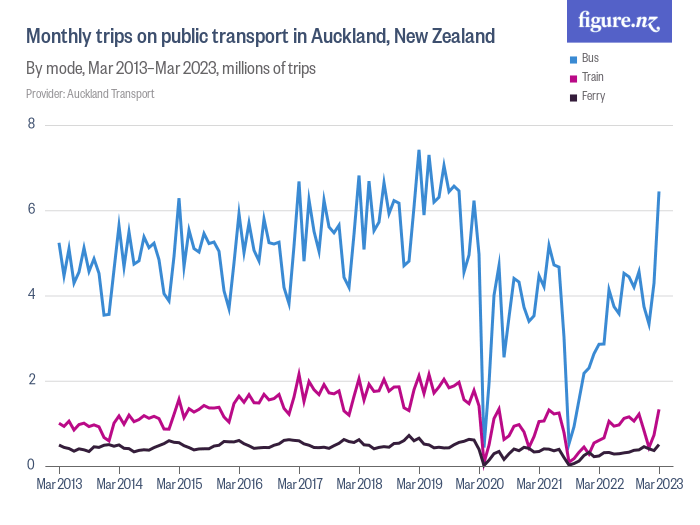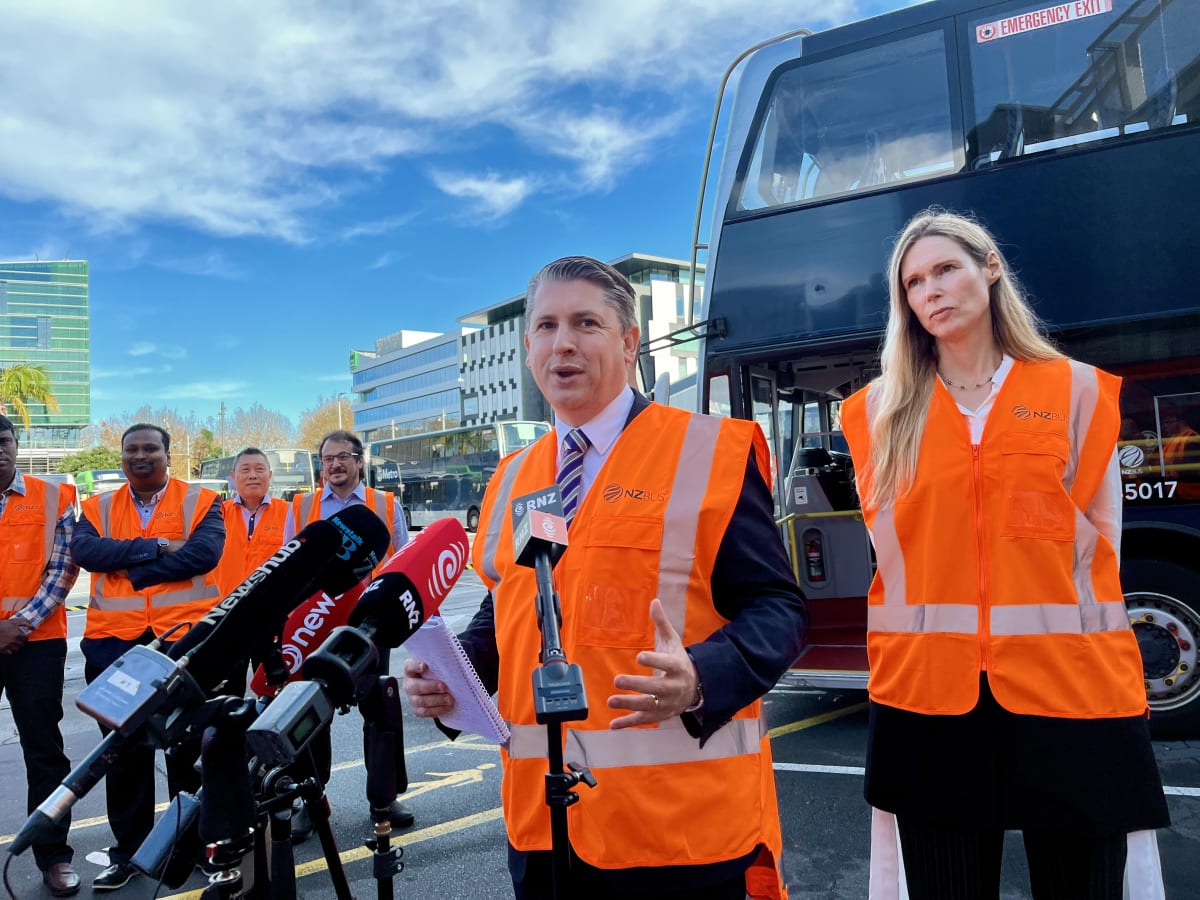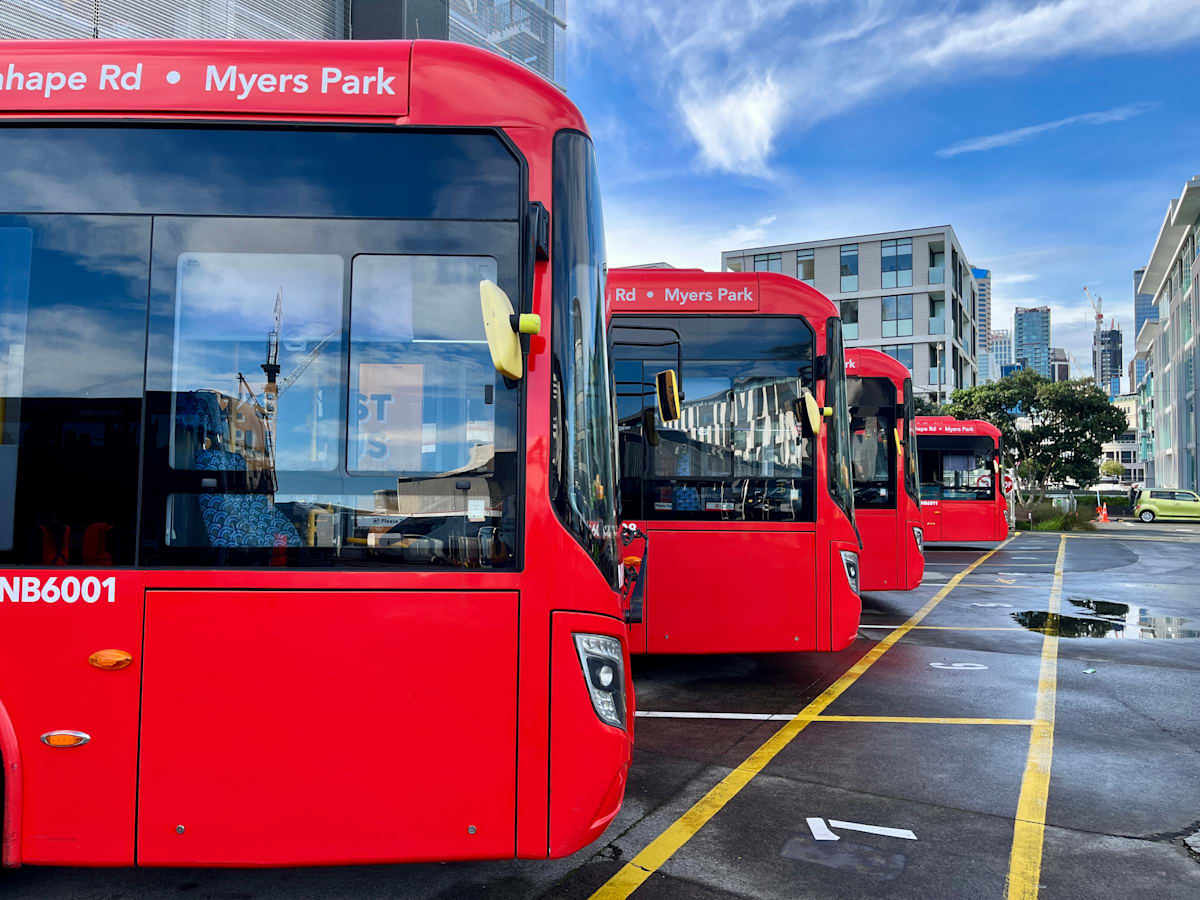
Safety barriers on Auckland buses could soon be part of a wide-ranging approach to attract bus drivers to Auckland and ‘rebuild’ the public transport system
Auckland buses will soon be more reliable as immigration pathways and subsidised pay rises halve driver shortages – but drivers could soon be greeting passengers from the other side of a sheet of safety glass.
That’s following work done by central Government and Auckland Transport to make bus driving more attractive and combat the labour shortages that have prevented the rebuilding of the public transport system after the pandemic.
READ MORE:
* Auckland public transport: do it once and do it right
* Labour's light rail at the end of the tunnel
Along with low pay and long hours, safety concerns have plagued the sector in recent months, particularly following the stabbing of a driver in Mt Roskill in March.
So on top of promises of better wages and working conditions for drivers, a safety barrier is being trialled that would hopefully protect drivers from violent passengers.
Minister of Transport Michael Wood was down at the NZBus depot on Auckland’s waterfront on Tuesday morning to inspect the barriers and give some detail on what he called the “biggest ever investment into supporting public transport than any government has ever made”.
It’s an investment in several parts, but to Aucklanders sick of seeing a list of cancelled services when they open their AT app, it’s those efforts to end the driver shortage and get the bus system back on its feet that will bring the most relief.

Auckland Transport chief executive Dean Kimpton’s goal is to bring patronage of buses in Auckland back to pre-pandemic levels by the beginning of 2024 – a mission Wood is whole-heartedly on board with.
Wood said it had been a tough couple of years for transport operators, with lockdowns and Covid anxieties slashing patronage before the driver shortage did the rest.
Bus use in Auckland saw a massive and sudden drop in March of 2020, when lockdowns brought it down from more than six million rides a month to around 6 percent of that.
But although it’s been more than a year since Auckland’s last lockdown, bus patronage in January of this year was still around half of 2019 levels.
It’s only in the past two months that numbers have begun to pick up again, which Wood put down to funding.

“The good news is it's already working,” he said. “We are confident that by quarter three or quarter four of this year we will have substantially got down that bus driver shortage and will be able to get back to better service.”
The buses were 860 drivers short at the end of last year – now down to 460.
Cancelled services and reduced patronage meant reduced revenue for transport agencies like Auckland Transport.
The Government is stumping up $140 million to help local councils fill their transport shortfalls. At least $20 million of that is expected to go to Auckland Council.
Auckland Mayor Wayne Brown announced his own plans for Auckland’s public transport on Tuesday afternoon, adapting his final budget proposal to direct an additional $20m into reinstating bus services.
He said his budget proposal would suggest increasing bus driver wages to $30 per hour, pitching in the local share needed for Auckland Transport to access the government funding.
In the week of May 8, Auckland Transport reported 5778 cancelled bus trips, many of which were previously unannounced.
Brown said his plan – which has plenty of overlap with Wood’s announced moves – built on recent improvements.
“We need to stop the cancellations, so the services are reliable, and then we can work on increasing services as supported by demand,” he said. “I have heard that many Aucklanders do not want cuts to public transport services and that we also need to ensure we are getting value.”

But on top of more attractive wages, it’s been decided that the shortage will be difficult to overcome if prospective drivers are hearing horror stories about the mean streets of Auckland.
Bus driver unions have said some drivers reported being punched at the wheel, while others feared retaliation from agitated passengers and felt very vulnerable while on the job.
It seems drivers have often born the brunt of the past few years’ anxieties – a well of frustration spread out across a population that has dealt with lockdowns, $7 avocados and long weekend floods. Sometimes that well erupts, and bus drivers are often subjected to the worst.
“Whenever you see any of those incidents it is deeply concerning,” Wood said. “We did see in that period post-Covid an increase in people's level of tension and aggression at times.”
Hence the new barriers separating the drivers from the public. Two buses have been fitted out with prototype versions, tried out by more than 200 drivers.
Waka Kotahi NZ Transport Agency public transport manager Delaney Myers said the results from drivers had been overwhelmingly positive.
However, it could be some time before they are brought to every bus in the city.
“It's really important that we roll this out slowly to enable the drivers to get used to these new screens and make sure that they are fit for purpose,” Myers said. “It’ll be a slow process to make sure that we get this right.”

Wood took a turn at the wheel behind the glass, telling media that a careful look at design would be a good idea – an unwelcome glare from a misplaced pane of glass could distract a city’s worth of drivers.
In the meantime, conflict de-escalation training is being given to drivers, while a proposed increased police presence in the CBD is hoped to reduce issues for drivers on the CityLink, where drivers have expressed particular safety concerns.
Wood said rolling out transport officers like those seen on Auckland’s trains was an “ongoing conversation”.
Along with bringing in new drivers, last week’s Budget opened up fare subsidies for public transport around the country, giving free fares to under 13s and half-price fares for under 25s.

Combined with previously implemented subsidies for Community Services cardholders and people with disabilities, over two million New Zealanders will have improved access to public transport.
“It means that those households will be able to just not worry about the cost of moving about communities,” Wood said. “It will take that concern completely away and will help to get patronage moving in the direction that we want.”
Half-price fares for under 25s is a targeted move to breed a generation of public transport converts.
“We know that if we get young people into the habit of using public transport they are then more likely to keep using public transport as they move into the latter stages of their lives,” Wood said.
But how will this work once rolled out; are bus drivers expected to act as bouncers, checking ID upon entry?
In Auckland, specific Hop card concessions mean young people will be able to tag on and receive the appropriate discount.
Around the rest of the country, different systems will find different solutions, but that does mean there’s still quite a bit of operational logistics for transport agencies to work through.
Wood said funding would be available from July 1 for different councils, which would then need to “pick that up and operationalise it”.
He said the different challenges involved in this meant the scheme may debut at different times around the country: "It will potentially deploy across a period of several months.”







